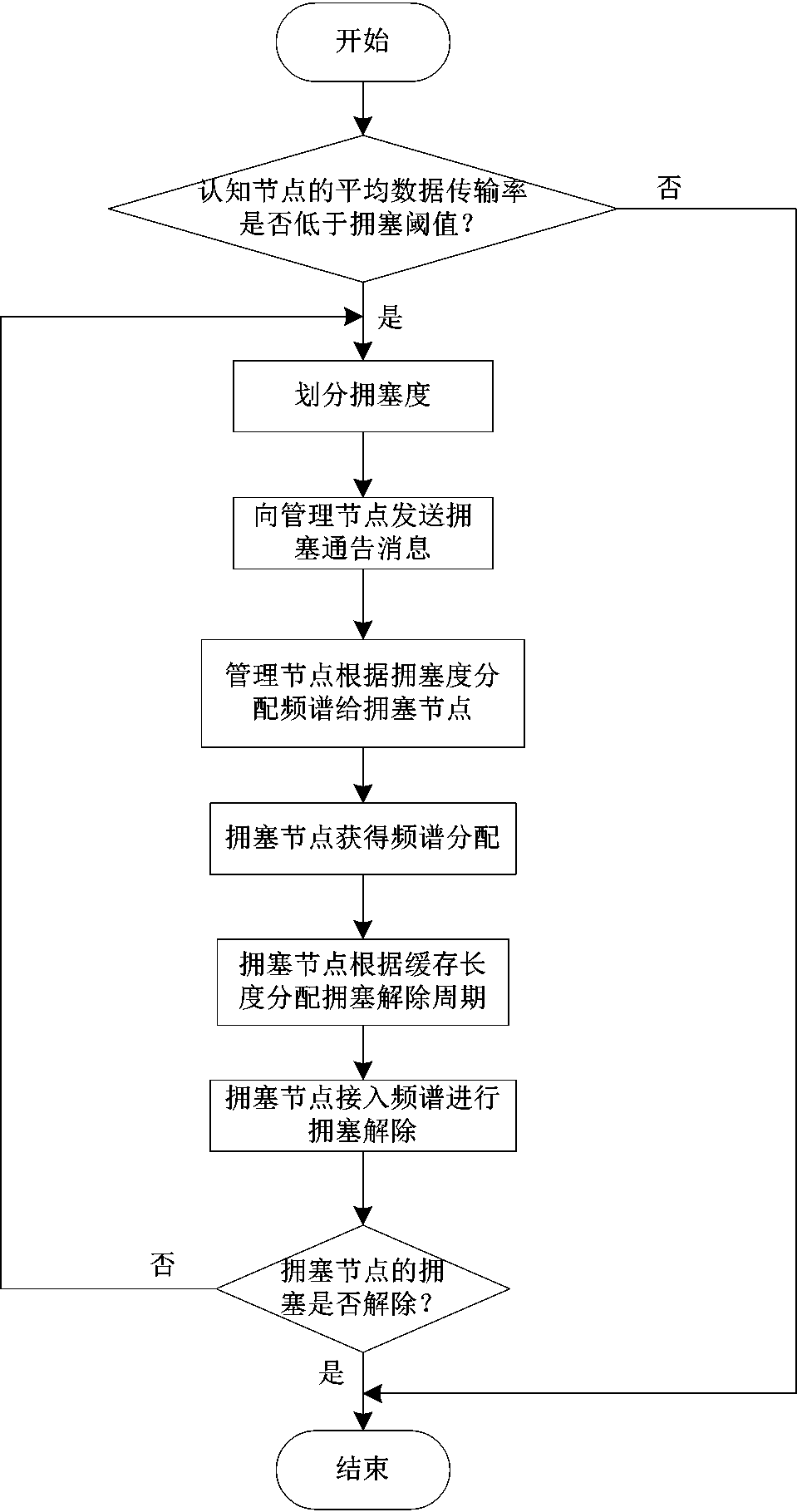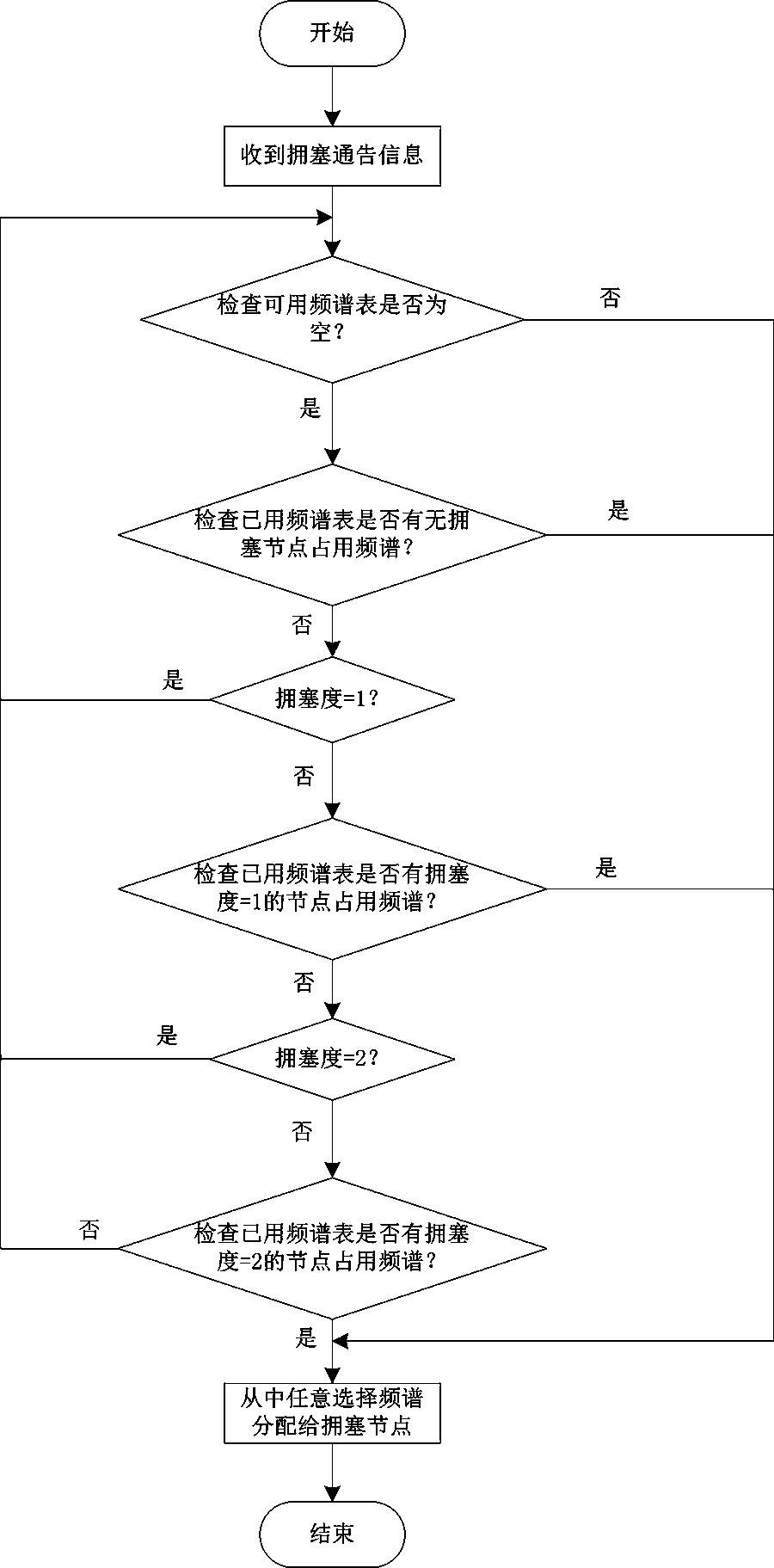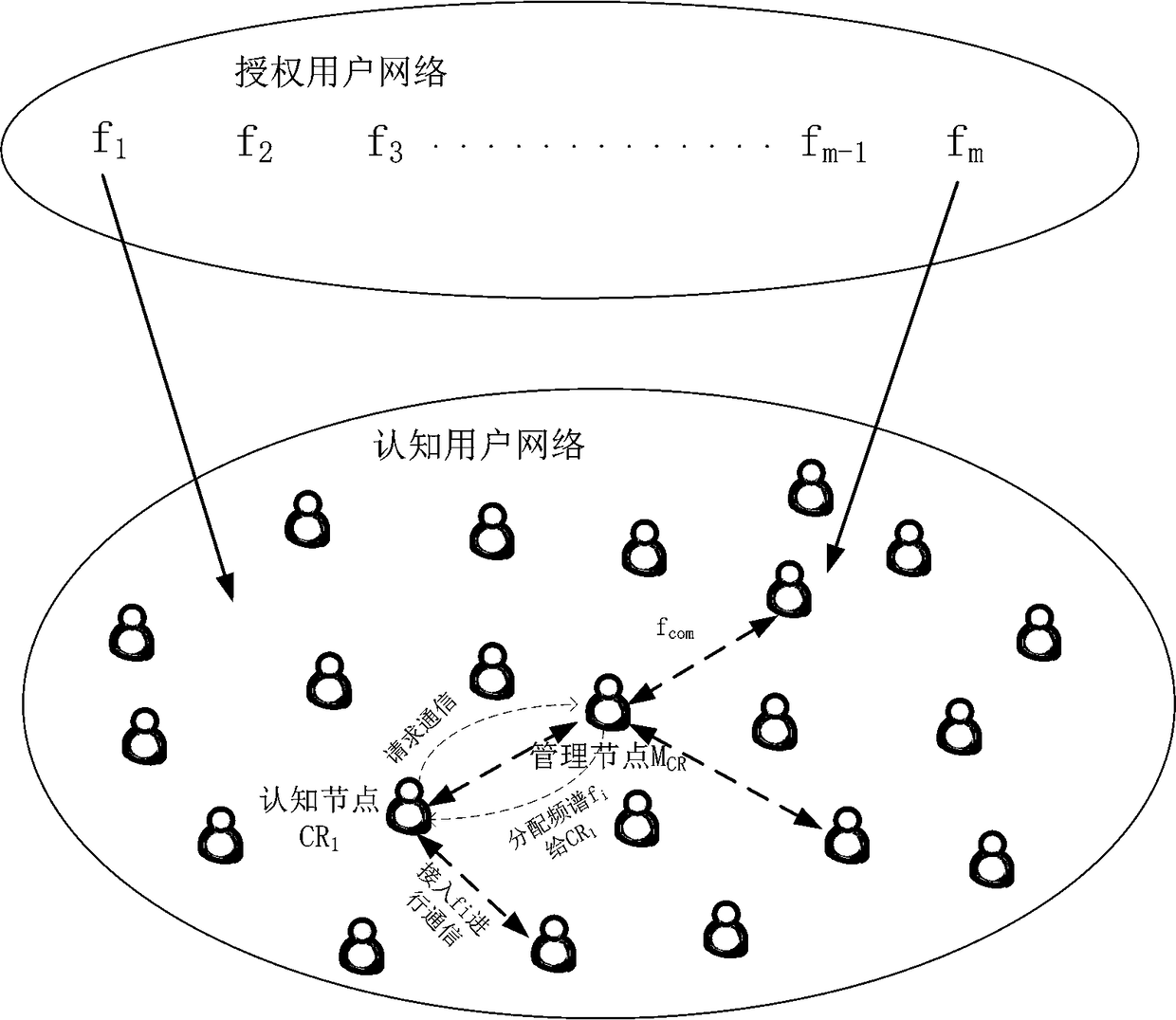A Congestion Control Method Using Spectrum Allocation in Cognitive Networks
A spectrum allocation and cognitive network technology, applied in the field of congestion control, can solve problems such as low spectrum utilization efficiency, frequency band congestion, congestion, etc., to reduce the time to access spectrum, improve fairness and efficiency, and reduce collisions and packet loss Effect
- Summary
- Abstract
- Description
- Claims
- Application Information
AI Technical Summary
Problems solved by technology
Method used
Image
Examples
Embodiment Construction
[0022] The invention proposes a congestion control method using spectrum allocation in a cognitive network. The embodiments of the present invention will be further described in detail below with reference to the accompanying drawings.
[0023] 1. See attached figure 1 , It is the congestion control flow chart of the present invention; in the present invention, first, the cognitive node detects congestion by monitoring its own data transmission rate, and divides the degree of congestion; then, the cognitive node that detects the congestion sends the congestion to the management node Announce information. After receiving the congestion notification message, the management node allocates spectrum to the congested node according to the information in the available spectrum table and the used spectrum table, and combined with the congestion degree; finally, after the congested node obtains the spectrum allocation, it is set according to the current buffer length Congestion removal c...
PUM
 Login to View More
Login to View More Abstract
Description
Claims
Application Information
 Login to View More
Login to View More - R&D
- Intellectual Property
- Life Sciences
- Materials
- Tech Scout
- Unparalleled Data Quality
- Higher Quality Content
- 60% Fewer Hallucinations
Browse by: Latest US Patents, China's latest patents, Technical Efficacy Thesaurus, Application Domain, Technology Topic, Popular Technical Reports.
© 2025 PatSnap. All rights reserved.Legal|Privacy policy|Modern Slavery Act Transparency Statement|Sitemap|About US| Contact US: help@patsnap.com



